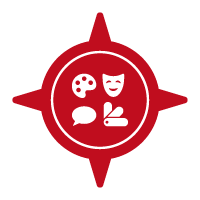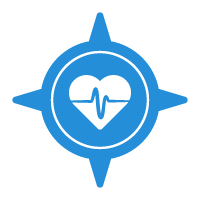About Guided Pathways to Success
Navigating college can be confusing, especially if you are the first in your family to attend. There are lots of moving parts: You need to apply for financial aid, choose courses that lead to a degree, maybe find tutoring …
You also must make important decisions, like what career you want to pursue.
Luckily, you don’t have to take these steps alone. Or make these big decisions without support. You have a tool to guide you through community college: your guided pathway. And you have someone to help you use this tool: your pathways advisor.
Based on your interests and goals, your guided pathway is a one-page document that clearly shows you what courses to take (and when) to best prepare you for success in college and in your career.
Which guided pathway should I choose?
Start by meeting with a pathways advisor. They will guide and assist you in planning your schedule, choosing courses and ultimately planning your career. Along with your career coach, your pathways advisor will help you make decisions about your guided pathway.
As you three team up to plan, remember, there are seven career paths within Dallas College:
Each career path has similar college programs grouped beneath it.
For example, the Health Sciences career path includes the Veterinary, Medical Laboratory and Invasive Cardiovascular Technology programs. Each program has a degree plan you can follow, and many programs also offer a guided pathway.
What’s the difference between a degree plan and a guided pathway?
Let’s use a real-life example to understand the difference between a degree plan and a guided pathway.
A degree plan is like restaurant menu. It shows you all the different classes you can pick from to complete your chosen certificate or degree. Options are great (who doesn’t like options?!), but so many choices can also be overwhelming.
A guided pathway is more like the chef’s recommendations. With specific items suggested for you, you do not have to make as many decisions about what to select. It can save you stress, time and money.
A guided pathway is a one-page, printable, mobile-friendly PDF.
At the top you’ll see a year — for example, “Dallas College 2020-2021.” You can use a guided pathway only if you began attending Dallas College on (or before) the listed school year.
In the top right you’ll see a career path icon. For example, the green icon pictured here is the icon you would see for any guided pathway that falls within the Business career path.
Directly below the career path icon, you’ll see which of the seven campuses offers a specific guided pathway. For example, if you were viewing the guided pathway for Bakery/Pastry (yum!), then beneath the green icon you’d see it is solely available at ECC, short for El Centro Campus. Or say you were viewing the guided pathway for Accounting (a career that makes cents!). Beneath the green icon you’d see that guided pathway is available at all seven campuses.
About halfway down the page, you’ll see your semester-by-semester map. This tells you which specific courses to take and which semester to take them in.
To the right of the courses, the map lists action items. These are those key “milestones” that are essential to your continued progress. Check the action items off as you complete them to make sure you stay on track and progress through college efficiently.
To the left of the courses, the map has a column labeled “D” for degree. Courses with a diamond in the “D” column are required to earn a degree in the guided pathway you are viewing.
Your guided pathway may have additional columns to the left of the course listings with the letter “C” for certificate. If you earn a certificate or skills award in a program, you can later apply (i.e., “stack”) those credentials toward earning a degree. This means you can get short-term certificates on the way to program completion (something both students and employers love)!
A guided pathway is your reassurance that you are on the right path to receive the right training for your bright future. It is central to your college success. A guided pathway can help you set academic goals based on your career and/or transfer interests, develop a firm plan to reach those goals and keep you on track at college.
A guided pathway is also a great tool to lead discussions between you, your advisor and your career coach. It makes sure that everyone is on the same page (literally)!
When do I meet my pathways advisor?
It is important to see your pathways success coach (advisor) early in your decision-making.
Along with your career coach, your pathways success coach (advisor) will be at your side until you
- complete your certificate or degree
- transfer to a four-year school and/or
- enter the job market.
They are not the only players on your team, though! You also have the Dallas College Navigators. The navigators can help you balance work, family and school by connecting you with helpful resources (at college and in your community). They can help you with anything from food and housing to transportation and tutoring. Please reach out anytime for one-on-one assistance!
The guided pathways available at Dallas College were created by the faculty and staff. Across the college, employees collaborated to develop career paths and redesign the student experience. The work began after gathering feedback from students in a semester-long research study.
Because the Guided Pathways program is still new, it remains in development. Innovative technology solutions are coming to support Guided Pathways, and there are lots of exciting things happening behind the scenes. Why? Because we care about your academic and career growth. Higher education should actually get you hired!
As of Spring 2019, there are more than 200 guided pathways. And every day, faculty and staff at Dallas College are working to develop more guided pathways for students!
In fact, some programs even offer multiple guided pathways. For example, Construction Management has two guided pathways to a career. You can select from the Commercial or Residential track.
To see what guided pathways are currently available, begin by selecting one of the seven career paths:







